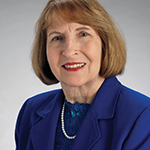
The Case
I was looking forward to this day with a mixture of dread and anticipation. Don’t fret; it will be over in less than an hour. Then you will learn whether your assumptions were correct. I tried to divert my attention to another subject: the unusually muggy September weather, the imminent collapse of the Red Sox pennant run, the upcoming ACR meetings. For the past five weeks, most of my precious free time was spent poring over every word of the case protocol, looking for any hidden clues. Now, it was time for me to step up to the podium and begin my oration. This was going to be a very formal presentation. The expansive lecture hall before me was nearly deserted, save for a few older physicians chatting amicably in the front row and a handful of somnolent medical students catching a few winks in the back row. Most likely they had been enticed by some form of bribery involving snacks and sodas.
I began my discussion of The Case. It told the story of a 46-year-old man who presented with fever, asthma, neuropathy and a peripheral eosinophilia. Despite the sparse description, any rheumatologist with a pulse would have instantly deduced that the patient suffered from a systemic necrotizing vasculitis. But the whole point of this teaching exercise was for the discussant (me) to parse the patient’s presentation for critical clues and then carefully sketch a detailed roadmap that would ultimately direct the listener to the correct diagnosis. So why was I so nervous? I recalled a wizened colleague’s opinion about the clinical pathological conference (CPC): Half the audience comes to learn, and the other half to see you fail. Maybe I was anxious because my soon-to-be-delivered (and now impounded) narrative was slated to be published verbatim in an upcoming issue in that veritable repository of the CPC, the New England Journal of Medicine (NEJM).1
A Brief History of the CPC
The CPC’s origins can be traced to the late 19th century and Harvard Law School, where the idea of the case method of learning and instruction sprouted in the mind of a law professor named Christopher Langdell. Walter Cannon, MD, then a student in his final year of study at Harvard Medical School, was awed by his law school roommate’s enthusiasm for the case-history method of teaching law.2 So, in 1900, Dr. Cannon, the legendary physiologist who promulgated the flight or fight hypothesis and several other notable conjectures, published a landmark paper, titled “The Case System,” that proposed using the CPC as a teaching tool.3 According to Dr. Cannon, medical students dreaded their daily routine of four hours of continuous lectures every afternoon, which they considered, “a dreary and benumbing process.”
Dr. Cannon was severely criticized both inside and outside his institution. A prominent Boston surgeon, Jacob Bigelow, MD, was emphatic in his support for the status quo, namely the apprentice system of training, declaring that surgeons were born and not made. The esteemed chair of medicine at the Johns Hopkins Medical School in Baltimore, Sir William Osler, also opposed Cannon’s inductive method of teaching. He preferred to shower students with his medical knowledge and musings on medical history, a practice aptly described as eminence-based medicine.4
However, Dr. Cannon’s approach prevailed, and over time, the CPC has endured as a fixture in medical education. A case in point is the wonderful and well-attended CPC presentation at the 2014 ACR/ARHP Annual Meeting in Boston, which was given by my dear friend and colleague, Ron Laxer, MD, professor of pediatrics at the University of Toronto, Canada. (Available on SessionSelect: Clinicopathologic conference: A 17-year-old young woman with chronic ankle and back pain.)
The Lecture Hall Has Disappeared
Attracting a sizable and engaged audience to attend an insightful medical lecture should not be a daunting task. If you organize it, they should come. This was clearly evident at our recent Annual Meeting, where attendees were offered a cornucopia of wonderful talks. For example, we witnessed more than 2,400 people cramming into the cavernous main convention hall to hear a series of stimulating lectures at the annual Review Course. Similarly, only standing room was available for latecomers hoping to hear most plenary and state-of-the-art sessions. Clearly, rheumatologists came to learn, to hear new hypotheses and to exchange ideas. And so they packed the lecture halls.
Yet over at our medical schools, the class lecture is moribund if not already dead. Regardless of the school, the topic or the speaker, students stay away in droves. Nowadays, neither the wisdom nor the brilliance of an Osler or a Cannon would likely draw much of a crowd. What is wrong with our medical teaching?
As many of you are aware, most medical school curriculums have recently undergone or are about to undergo substantial redesign. Interactive learning, flipped classrooms and self-study are replacing the traditional large-group lecture, which has been banished (see Rheuminations: “How disruptive technology has transformed the medical school classroom,” September 2013). Its demise could have been predicted when, in their infinite wisdom, most school administrators began distributing slide decks ahead of lectures and videos of the presentations almost immediately following their conclusion. What a wonderful idea! Why ask students to set their alarm clocks every morning and rush off, half asleep, to class when they can sleep in, chill out, read some news online, catch up on Facebook or watch the highlights from last night’s The Daily Show? This may not be what their parents envisioned when they helped pay their latest tuition bill, but does it really matter if they just skip class and fast forward through the video clips instead, pausing at the more interesting parts? This eliminates redundancy, and students can focus on the facts and have time to spend on other activities. A University of Texas Southwestern 2014 Medical School graduate recently described her preclinical years on National Public Radio5:
“If you want to do the whole thing by video stream, you can,” she says. “I would wake up at 10 a.m., work out for an hour or so, get some lunch and then video stream for six hours and then go to happy hour. It actually was not that bad.”
Undoubtedly, video streaming is the most highly disruptive technology that medical education has ever encountered since the days of Dr. Cannon. In the span of just a few years, the relevance of the live medical lecture in the daily life of the average medical student has all but vanished.
In addition to providing immediate online access to course material, medical schools shy away from enforcing mandatory attendance policies, thus providing little incentive for students to attend class. They have created a new category, best described as the stay-at-home student.
It may be time to contrast our new way of teaching with another format, the business school approach. Most graduate business schools require attendance at all lectures.
Most students don’t see any relevance in sitting in class with their peers or posing live questions to the lecturer. Years ago, it seemed that inviting a few patients to class would captivate the audience. It still does, but the draw of having live patients has faded. Although attendance rises, it rarely exceeds more than 50%. If live patients can’t turn out first- or second-year medical students, what does? Recently, I prepared a 90-minute rheumatology course review for our Year 2 class that was held four days prior to their exam on this subject. There was going to be ample opportunity for questions to be answered and for ambiguities to be clarified. Despite the seemingly high value of such a session, less than 25% of the class bothered to show up. I was left wondering what the remaining 75% of the class must be doing on a cold, drizzly December weeknight in Boston, just days away from their finals.
Perhaps I am missing the point. Do I have this all wrong? Two students at the Johns Hopkins Medical School in Baltimore recently highlighted the merits of video streaming and how big data can enhance medical teaching.6 They observed that Facebook and Netflix are managed by more sophisticated algorithms than the tools used to learn medicine. These data-driven companies have capitalized on the modern “attention economy,” and they measure success through such metrics as “daily active users” and “time on site.” They analyze thousands of data points on each individual to develop personalized recommendations, among other techniques, that keep users engaged. The authors, both steeped in substantial computer science training, propose that similar metrics be applied not only to lectures, but also to all forms of medical teaching. For example, data analytics could help identify which parts of a lecture students find most confusing by analyzing which segments are rewound and replayed the most. Computer algorithms could create better context for teaching by identifying previous course material and linking it to current lectures.
Providing objective information to lecturers would help them create better lectures in the future. It would also be a great improvement over the current lecture feedback system in which students display their disapproval physically, either rolling their eyes or nodding off in class.
Technology is great, but suppose all these sorts of ideas were carried to their extreme. Perhaps all preclinical medical teaching (i.e., the first 15–20 months of medical school) could be taught exclusively online. There may be a bright side to this proposal. Couldn’t online teaching slash ballooning medical school tuition costs by nearly half? Just wondering.
The Business School Model
It may be time to contrast our new way of teaching with another format, the business school approach. Most graduate business schools require attendance at all lectures. In fact, most use assigned seating, allowing professors to call on students by name. Class participation factors significantly into the final grade, generally accounting for about 30% of the score. Business school students seem to relish this approach, and most surveys indicate they consider this form of Socratic teaching and the need to attend, rather than skip, class as critical elements in their intellectual and social development as future business leaders. After all, getting to know the right people, and learning how to network and to work in teams will help define their future successes. These mature views may be abetted by the reality that most MBA students have already worked after graduating from college and are, on average, four years older than the typical 23-year-old freshman medical student.
In contrast, medical students are rarely encouraged and certainly rarely rewarded to work in teams. Social interactions with classmates are optional. Getting through medical school remains, for the most part, a solo affair. How can we expect that our residents and fellows will be ready to work collaboratively and interact effectively with nonphysician members of the healthcare team when these traits have not been nurtured during their formative years in training?
Long Live the CPC
What does all of this have to do with the CPC? At its core, the CPC is a form of storytelling. Over the years, versions of it have been used effectively in various genres, including television shows, such as House or ER, or in literary forms, including The Tales of Sherlock Holmes, novels by Patricia Cornwell, Robin Cook and many other medical mystery writers. Executed properly, the CPC enhances all the requisite traits required by the aspiring physician: engagement in solving a problem, curiosity, critical thinking and teamwork. As the designers of the new curriculum at Stanford Medical School in Palo Alto, Calif., observed:7
“Patients’ stories are what make the acquisition of medical knowledge compelling. They serve as the scaffolding on which facts and concepts can be organized and reinforced. A single case could serve as the lead-in to multiple medical school topics that otherwise might seem dry and routine.”
It’s time to bring the CPC back to the classroom and cajole or coerce the stay-at-home students to give it a try. They need to experience the thrill of witnessing the teaching live and absorbing its juicy, slow-cooked flavors rather than skimming through the leaner, less tasty recorded version on their electronic devices. After all, wouldn’t any 23-year-old prefer to see and hear Pearl Jam perform live rather than streaming the concert days later? Who said med school doesn’t rock!

Simon M. Helfgott, MD, is associate professor of medicine in the Division of Rheumatology, Immunology and Allergy at Harvard Medical School in Boston.
References
- Helfgott SM, Niles J, McCluskey RA. Case records of the Massachusetts General Hospital. N Engl J Med. 1992;326:1204–1212.
- Blumgart HL. CPC and the MGH. N Engl J Med. 1972;287:820–821.
- Cannon WB. The case method of teaching systematic medicine. Boston Med Surg J. 1900;142:31–36.
- Louis DN, Young RH, eds. Keen Minds to Explore the Dark Continents of Disease: A History of the Pathology Services at the Massachusetts General Hospital. Massachusetts General Hospital and Harvard Medical School. Boston: 2011.
- Silverman L. Millennial doctors may be more tech-savvy, but is that better? Morning Edition NPR. 2014 Nov 27. http://www.npr.org/blogs/health/2014/11/27/366766639/millennial-doctors-may-be-more-tech-savvy-but-is-that-better.
- Gaglani SM, Haynes MR. What can medical education learn from Facebook and Netflix? Ann Intern Med. 2014;160:640–641.
- White T. Professors propose ‘lecture-less’ medical school classes. Stanford Medicine News Center. http://med.stanford.edu/news/all-news/2012/05/professors-propose-lecture-less-medical-school-classes.html.
Correction
In “Vaccines & Biologics” (The Rheumatologist, December 2014), an editing error made the order of vaccine administration and beginning treatment with rituximab unclear. Instead of saying, “Rituximab (RTX) should ideally be given before starting treatment,” the sentence should have stated, “Vaccines should ideally be given before starting treatment with Rituximab (RTX).” We regret the error.


